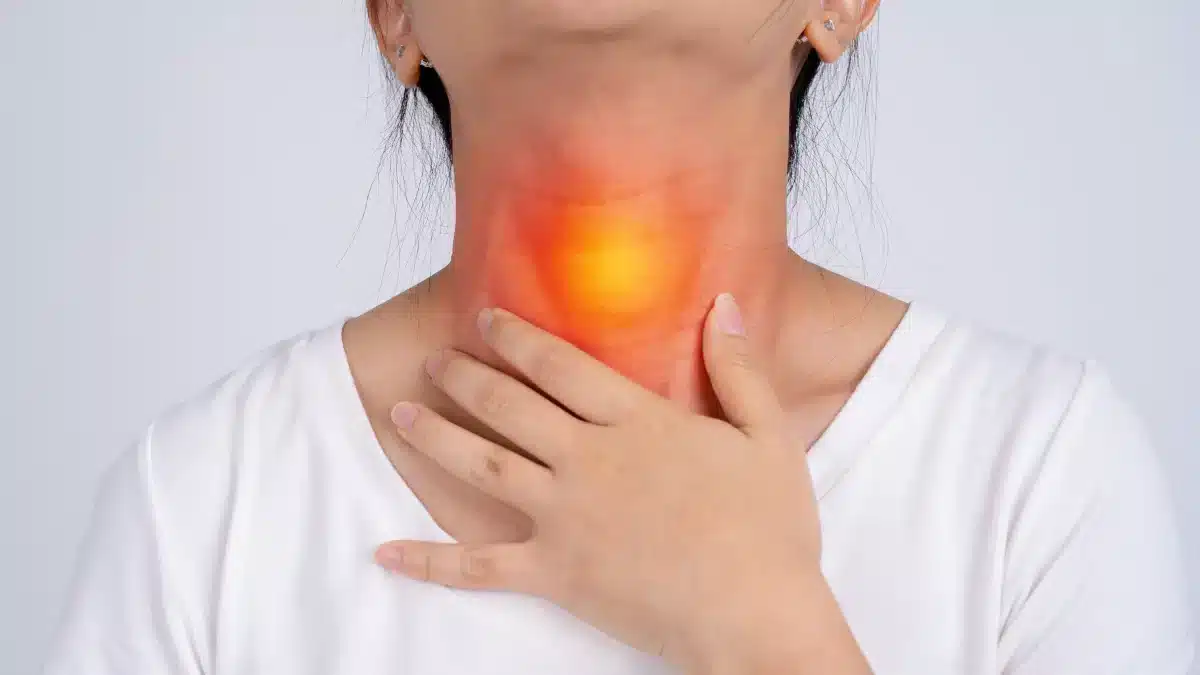Unveiling the Connection: Sore Throat STD
A sore throat is a common ailment that we often associate with colds or flu.
However, what many may not realize is that a sore throat can also be a symptom of Sexually Transmitted Diseases (STDs).
A sore throat STD is often the result of infection with bacteria, viruses, fungi, or parasites transmitted through sexual contact.
This article aims to shed light on sore throat STDs, exploring causes, accompanying symptoms, precautions, and available treatments.
Causes of sore throat STDs
While sore throats are primarily associated with viral or bacterial infections, they can also be linked to the transmission of STDs.
The most common STDs known to cause a sore throat include:
- Gonorrhea: Gonorrhea, caused by the Neisseria gonorrhoeae bacterium, can affect the throat when transmitted through oral sex. It may lead to discomfort, pain, and inflammation in the throat
- Chlamydia: Chlamydia, a bacterial infection, can impact the throat if the bacteria come into contact with it during oral sex. While it might not always present noticeable symptoms, a sore throat can be an indicator
- Syphilis: Syphilis, a Sexually Transmitted Infection caused by the bacterium Treponema pallidum, can result in a sore throat during the primary or secondary stage. This stage is characterized by the development of a sore or ulcer at the site of infection
- HIV/AIDS: Human Immunodeficiency Virus (HIV), which can lead to Acquired Immunodeficiency Syndrome (AIDS), may cause throat issues. The weakened immune system in advanced stages of HIV/AIDS can make individuals more susceptible to infections, including those affecting the throat
Accompanying symptoms of sore throat STD

Recognizing the signs and symptoms accompanying a sore throat related to STDs is crucial for early detection and intervention.
These symptoms may include:
- Painful swallowing: Difficulty or pain while swallowing may indicate inflammation or infection in the throat
- Redness and irritation: The throat may appear red and irritated, reflecting the body’s response to infection
- Swollen glands: Enlarged lymph nodes in the neck, a common immune system response to infections, may accompany a sore throat
- Fever and fatigue: Systemic symptoms like fever and fatigue may indicate the body’s attempt to fight off an infection
- Rash and lesions: In the case of Syphilis, the presence of a rash or lesions, including those in the mouth and throat, may be observed
Treatment of sore throat STD
The treatment approach for a sore throat caused by an STD depends on the specific infection.
Medical professionals may recommend the following:
- Antibiotics: Bacterial STDs like gonorrhea and chlamydia are often treated with antibiotics. It’s essential to complete the entire course of antibiotics, even if symptoms subside
- Antiviral medications: In the case of viral infections, such as those caused by the Herpes Simplex Virus (HSV), antiviral medications may be prescribed to manage symptoms and reduce the frequency of outbreaks
- Symptomatic relief: Over-the-counter pain relievers, throat lozenges, and warm saltwater gargles can provide symptomatic relief for a sore throat
- HIV/AIDS management: Individuals diagnosed with HIV/AIDS will be prescribed Antiretroviral Therapy (ART) to manage the virus and support the immune system. This comprehensive approach aims to slow down the progression of the disease
Precautions

Preventing the transmission of STDs and subsequently reducing the risk of a sore throat involves taking proactive precautions:
- Safe sex practices: Consistently and correctly using barrier methods, such as condoms or dental dams, during sexual activities can significantly reduce the risk of STD transmission
- Regular STD testing: Routine STD testing, especially for individuals engaging in multiple sexual partners or unprotected sex, can help in early detection and treatment
- Open communication: Open and honest communication with sexual partners about sexual health, STD status, and testing history is crucial for shared responsibility and informed decision-making
- Limiting sexual partners: Limiting the number of sexual partners can reduce the risk of exposure to STDs. Engaging in monogamous relationships with partners who have tested negative for STDs adds an extra layer of protection
Conclusion
A sore throat is not solely a marker of the common cold; it can also signal the presence of Sexually Transmitted Diseases (STDs).
Caused by bacteria, viruses, fungi, or parasites transmitted through sexual contact, sore throat STD demand attention.
Accompanying symptoms, including painful swallowing and swollen glands, emphasize the importance of early detection.
Proactive precautions like safe sex practices and regular testing, coupled with targeted treatments, emphasize the significance of prioritizing sexual health in overall well-being.
Prioritizing sexual health is a key step towards a healthier future.
Frequently Asked Questions
Can a sore throat be the only symptom of an STD?
While a sore throat can be a symptom of certain STDs, it is often accompanied by other symptoms such as redness, discharge, and pain. Regular testing is recommended for a comprehensive assessment of sexual health.
Is it possible to have an STD without noticeable symptoms?
It is indeed possible to have an STD without apparent symptoms. Regular testing, particularly for those with multiple sexual partners, is essential for early detection and prompt treatment, ensuring comprehensive sexual health.
Can practicing safe sex eliminate the risk of STD-related sore throats?
While practicing safe sex, including the use of condoms, significantly reduces the risk of STD transmission, it does not eliminate the risk entirely. Regular testing and open communication with sexual partners are essential components of comprehensive prevention.
How long does it take for symptoms to appear after exposure to an STD?
The incubation period for STDs varies depending on the specific infection. Some symptoms may appear within days, while others may take weeks or months. Regular testing is recommended for those at risk, regardless of symptom presence.
WowRx uses only high-quality sources while writing our articles. Please read our content information policy to know more about how we keep our content reliable and trustworthy.






